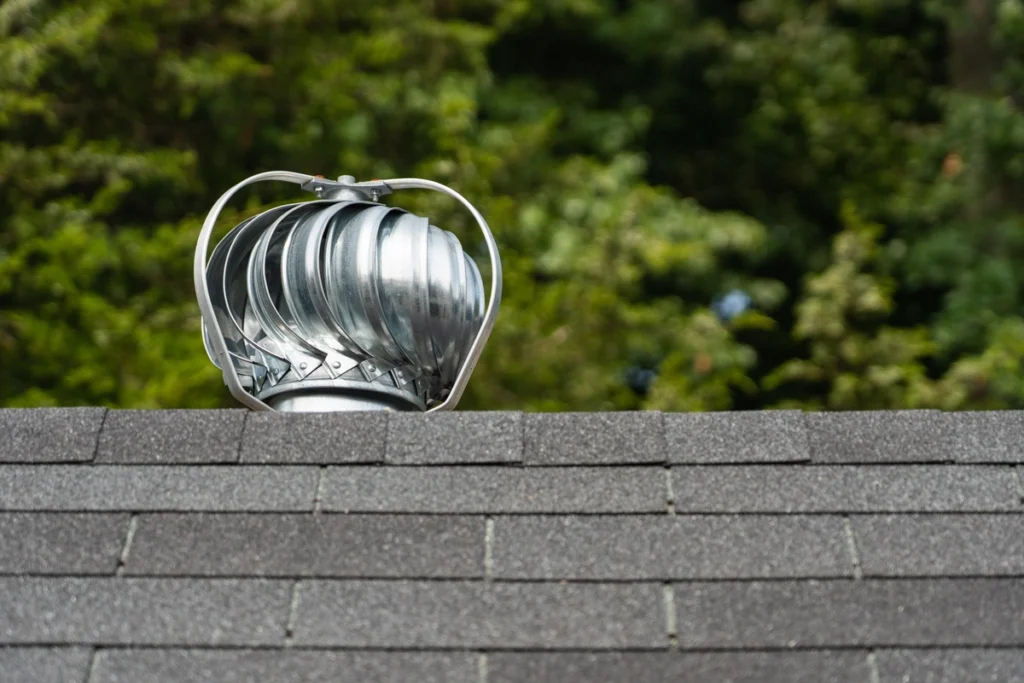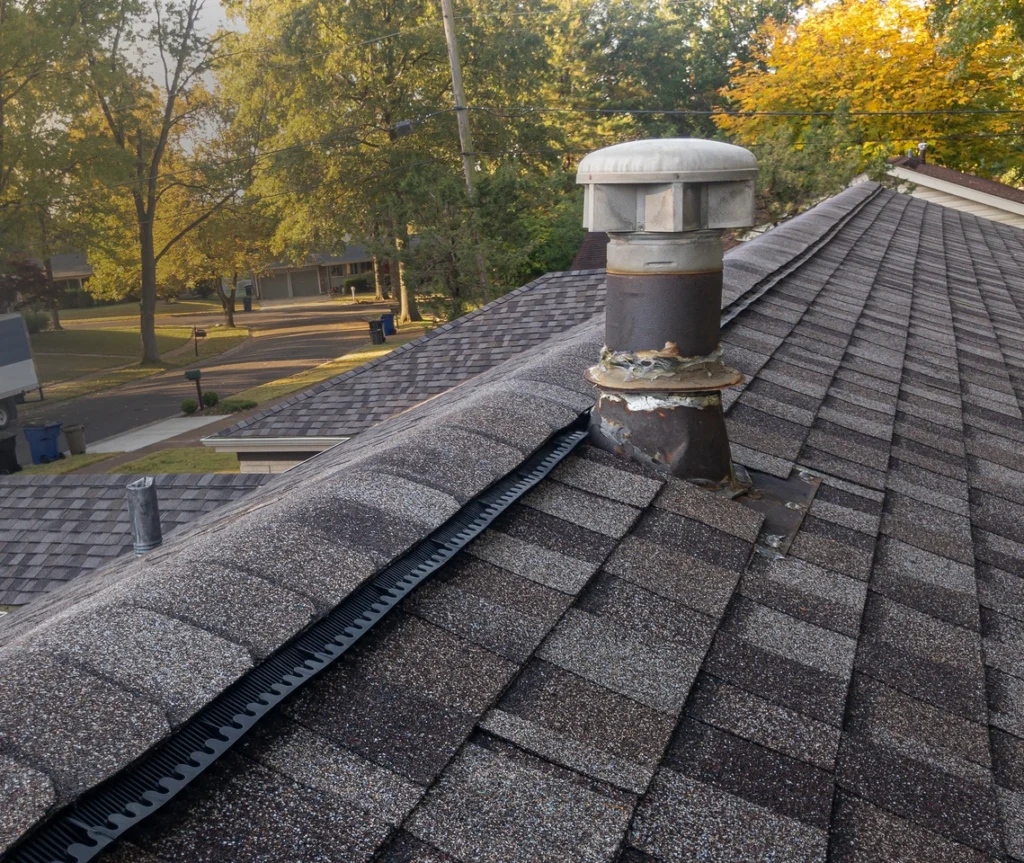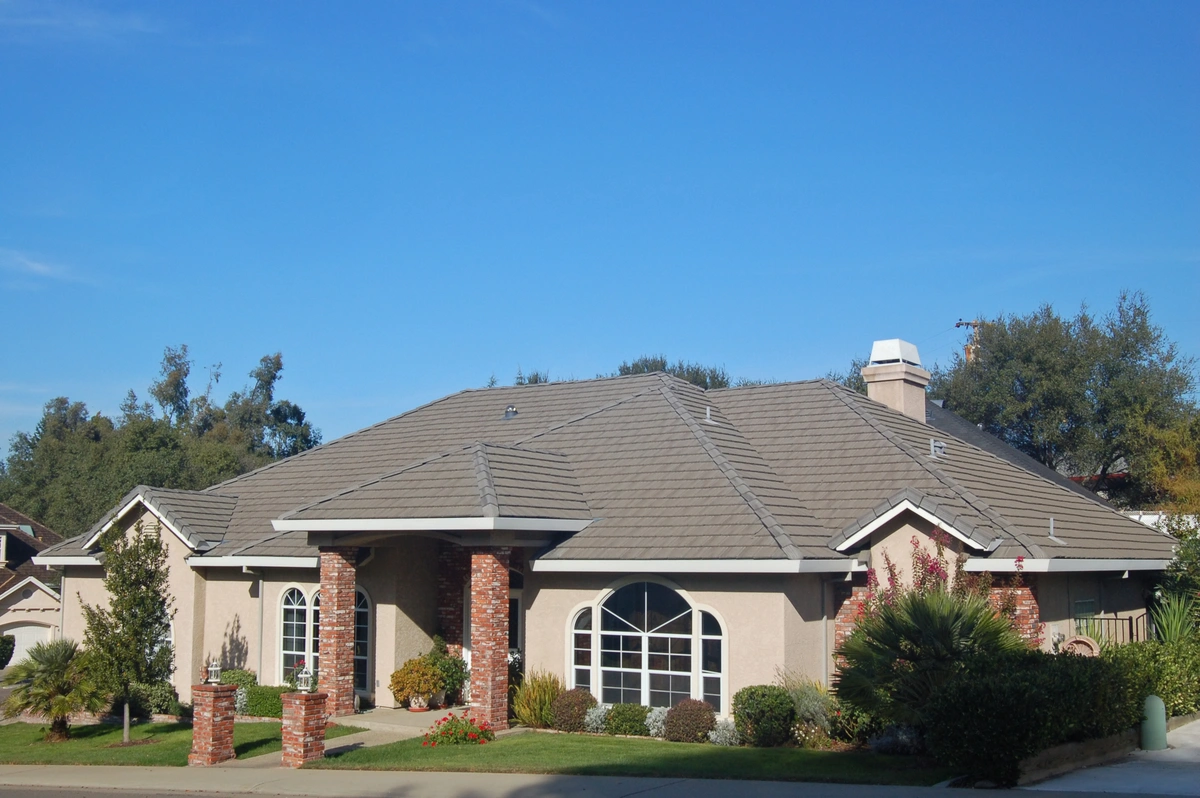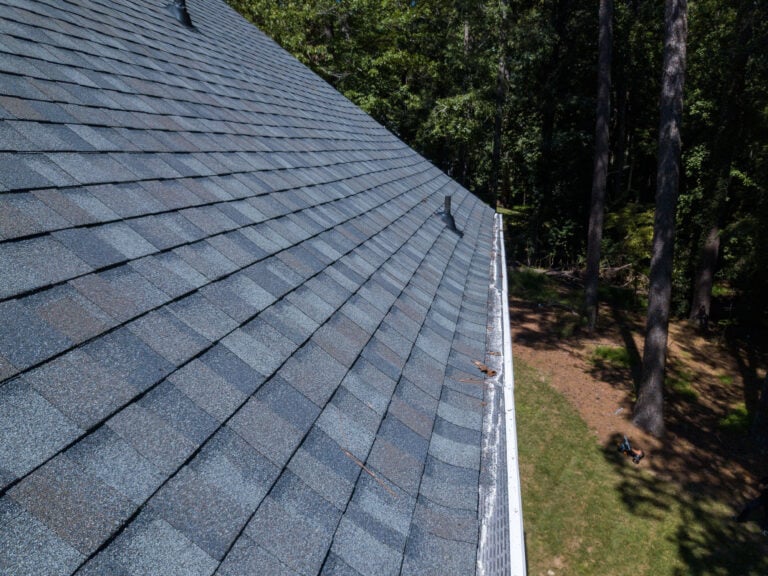Ah, the roof vents—an often overlooked but essential component of your home’s ventilation system. These unsung heroes play a crucial role in maintaining proper airflow in your attic, preventing moisture buildup, and protecting your home from potential damage. But with various types of roof vents available, how do you know which one is right for your home?
Let’s explore the world of roof vents and uncover how each type works its magic to keep your home comfortable and safe!
Inside this blog:
- The basics of roof vents and their functions
- 4 primary types of roof vents
- How each type of roof vent works
Keep reading to become an expert on roof vents and learn how they keep your home comfortable!
💨 Understanding Roof Vents: The Basics

Before we delve into the different types of roof vents, let’s start with the basics. Roof vents are openings in the roof that allow air to circulate freely between the attic space and the outside environment. Proper ventilation is essential for several reasons:
Moisture Control
Ventilation helps to expel excess moisture from the attic, preventing condensation and mold growth. Without adequate ventilation, moisture buildup can lead to structural damage and health hazards. Additionally, proper ventilation can help preserve the integrity of insulation materials, ensuring they remain effective in regulating temperature and reducing energy costs.
Temperature Regulation
Roof vents help regulate the temperature inside the attic, preventing it from becoming too hot or too cold. This helps protect roofing materials, prolonging their lifespan and reducing the risk of damage.
By maintaining a stable temperature in the attic, roof vents also contribute to a more comfortable living environment throughout the home, especially in rooms located directly beneath the attic space.
Air Quality
Proper ventilation improves indoor air quality by removing pollutants and odors from the attic space. This can have a positive impact on the overall health and comfort of occupants in the home. Furthermore, by reducing the buildup of airborne contaminants such as dust, allergens, and volatile organic compounds (VOCs), roof vents help create a healthier living environment for you and your family to enjoy.
Now that we understand why roof vents are important, let’s take a closer look at the 4 main types available and how they function:
1. Ridge Vents
Ridge vents are installed along the peak of the roof, running the entire length of the ridge. They are typically covered with shingles to blend in seamlessly with the roofline.
🔍 How They Work
Ridge vents rely on the natural buoyancy of hot air to create a passive ventilation system. As warm air rises in the attic, it exits through the ridge vent, while cooler air is drawn in through soffit vents or other intake vents located lower on the roof.
2. Soffit Vents
Soffit vents are installed along the underside of the eaves, allowing air to enter the attic from the outside.
🔍 How They Work
Soffit vents provide intake airflow for ridge vents or other exhaust vents. They allow cool, fresh air to enter the attic space, displacing warm air and promoting circulation. Soffit vents are often paired with ridge vents to create a balanced ventilation system.
3. Gable Vents
Gable vents are located on the gable ends of the roof, typically near the peak. They are often shaped like rectangles or half-moons and may feature decorative louvers.
🔍 How They Work
Gable vents allow hot air to escape from the attic, creating a natural convection current. As warm air rises, it exits through the gable vents, while cooler air is drawn in through soffit vents or other intake vents.
4. Turbine Vents
Turbine vents, also known as whirlybird vents, are cylindrical vents with fins that spin in the wind. They are installed on the roof and use wind power to create suction and draw hot air out of the attic.
🔍 How They Work
As the wind blows, the fins on the turbine vent spin, creating a vacuum effect that pulls hot air out of the attic. This constant airflow helps regulate temperature and humidity levels in the attic space.
🌬️ Picking the Right Roof Vent for Your Home

Now that you’re familiar with the different types of roof vents and how they work, how do you know which one is right for your home? Here are a few factors to consider:
Roof Design
The layout and design of your roof will influence the type of roof vent that is most suitable. For example, ridge vents work well on roofs with long ridgelines, while gable vents are better suited for roofs with gable ends.
Additionally, consider the pitch of your roof and any obstructions, such as dormers or skylights, that may affect the placement and effectiveness of roof vents.
Climate
Consider the climate in your area when choosing roof vents. Certain vents may be more effective in hot, humid climates, while others are better suited for cold, snowy regions. For instance, in areas prone to heavy snowfall, low-profile vents or snow guards may be necessary to prevent snow buildup and ice dams on the roof.
Ventilation Needs
Assess the ventilation needs of your attic space. Factors such as attic size, insulation levels, and the presence of moisture issues will impact the type and number of vents required. Additionally, consider the direction of prevailing winds and the orientation of your home to maximize airflow and ventilation efficiency.
Choose the Best Roof Vent Type for Your Home
Roof vents play a vital role in maintaining a healthy and comfortable home environment. Whether you opt for ridge vents, soffit vents, gable vents, or turbine vents, each type has its own unique benefits and functions. By understanding how roof vents work and choosing the right type for your home, you can ensure proper ventilation and protect your home from potential damage.
Contact our professional contractors at Palladium Roofing today for quick turnaround times and reliable industry warranties for your next project. We can’t wait to get started on bringing your vision to life!





